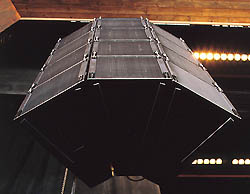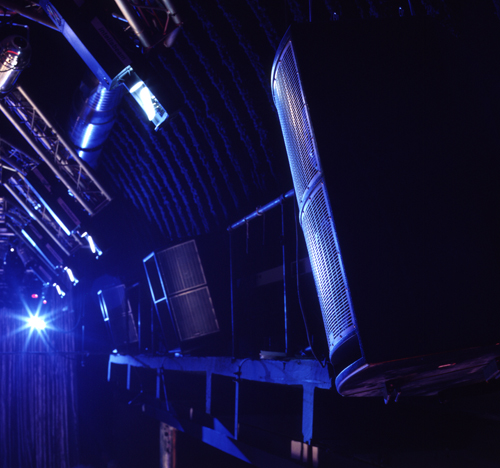
What’s the difference between time delay and phase delay?
While the underlying mechanism is the same, when we speak of time delay, we’re usually referring to long periods of time, such as the differential between a main array and a delay tower.
When we speak of phase, we’re either talking about a 180-degree reversal (more accurately termed polarity), or we’re speaking of the relationship of arrival time in respect to frequency.
There are almost no individual drivers that exhibit uniform phase versus frequency response when measured alone, and deviations are normally much greater when one driver interacts with another driver in a multi-driver system.
Where does group delay fit into all this? When phase response is linear (flat), group delay and phase delay are identical and are the same as time delay. In a non-linear system, group delay is the slope of the phase response at a given frequency. Variations in group delay cause signal distortion (not to be confused with harmonic distortion), just as deviations from linear phase also cause signal distortion.
Factor 3: Harmonic Distortion
This is extremely important because it determines much of what we perceive when we decide that we like one loudspeaker over another. All loudspeakers produce distortion, with most being three decimal points higher than any other device in the signal path – amplifiers included. The question is how much distortion, as well as how it varies as power levels vary, along with the nature of the distortion.
Let’s discuss how harmonic distortion is measured with an FFT. Typically, a low-distortion sine wave is applied to the loudspeaker. The acoustical response is then captured with a measurement grade microphone and viewed on an FFT. Ideally, the driver should produce only the fundamental frequency of the applied sine wave.
However, in the real world, the driver will inevitably produce second, third, fourth (and higher) harmonics that are easily seen on the FFT. The combined magnitude of all the harmonics is the THD, or Total Harmonic Distortion.
But there’s more. To fully understand a driver’s distortion characteristics, one has to change the frequency of the sine wave and look at the harmonics over a large range of frequencies and power levels, a time consuming effort. What you’ll see is that the distortion products of most LF and HF drivers will increase as the frequency is lowered.
You’ll also see an increase as the power level is raised. In a high-grade driver this should be a linear function; i.e., 10 dB greater amplitude of the fundamental equals 10 dB greater amplitude of the harmonics.
At some point, however, as the driver is pushed hard enough, the harmonics will no longer maintain a linear relationship to the fundamental. It’s actually possible to measure a higher level of second or third harmonic distortion than that of the fundamental. In such case the driver is producing more than 100 percent distortion, and the sonic result is truly awful.
Knowing the frequency range and levels in which distortion starts to radically increase will greatly help when deriving low frequency port alignment, as well as determining optimal crossover points.
Factor 4: Non-Harmonic Distortion
This is even worse than the harmonic variety. When quality drivers are operated below their power limit, the distortion they produce is harmonically related to the fundamental. Apply a 100 Hz sine wave to a cone driver and the distortion “product” will consist of a 200 Hz component (second harmonic), a 300 Hz component (third harmonic) a 400 Hz component (fourth harmonic). and so on.
Though distortion is not desirable, harmonic distortion is, at least, related to music. The pure beauty of a fine piano might be compromised, but at least it will still sound like a piano. Not so with non-harmonic distortion.
When a loudspeaker’s distortion products are not related to the harmonic scale, the effect is a radical alteration in tonality. A piano might sound almost nothing like a piano, if the non-harmonic distortion products are high enough. Usually (but not always), non-harmonic distortion is the result of a mechanical problem, not a design issue, and can therefore be fixed.

